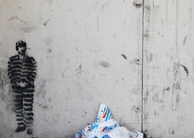Burying the Pen: Tackling Resistance to Formal Education by the Karimojong in Uganda
By
2010, Vol. 2 No. 02 | pg. 1/1
KEYWORDS:
The Karimojong people of the Karamoja region of Uganda are perhaps one of the few groups left on the planet that remain mostly disconnected from modern civilization. This semi-nomadic community has lived in the northeastern region of Uganda for many centuries. Their economy is based primarily on pastoralism, and the people have limited access to clean water, food, education and medicine. The Karimojong were one of the only groups that remained untouched by 19th century colonialism, due in great part to an active resistance. Since the 1930s, when the group symbolically buried a pen in the dirt, the Karimojong have refused to accept foreign education (Munaabi and Mutabaazi). The elders believed that the pen was a bad omen since it had been used in the Second World War to conscript men into the army (Forum on Flexible Education). They further made it clear that they did not support formal education, and anyone who let their children join was banished by the elders and declared an enemy of society. Foreign teachers were also declared enemies, and any child that had attended school was forced to return home and be cleansed (Munaabi and Mutabaazi). As a result of this rejection of formal education, by the mid 1990s they had a literacy rate of 12 percent for males and 6 percent for females (Forum on Flexible Education). But why exactly was education being rejected, and what could be done about it?The Karimojong people seemed to reject the formal education that was imposed upon them because they did not see the value in it. Each culture has their own set of values and beliefs that they pass on from generation to generation. These standards dictate what is right and wrong, what is important, what is appropriate behavior, and other cultural expectations (Lustig and Longman). This therefore creates a common obstacle within intercultural communication. In order to relate to people of other backgrounds, their ideals must first be understood. Two concepts, brought up by Timothy Reagan in his book Non-Western Educational Traditions: Indigenous Approaches to Educational Thought and Practice, helps us recognize some common historical themes. The first notion is that of elementary cultural relativism, which is when a culture accepts and understands its own culture as the norm. This is a common phenomenon throughout the world. This leads to epistemological ethnocentrism, which is clearly visible in the field of education (Reagan). There seems to be a general consensus that the Western educational model is the correct model, and that other societies would benefit from using our model. Regardless of whether or not this mindset is correct, it is undeniable that modern education is created by the center in order to be used by the periphery in hope that the periphery will adopt the values of the center (Cummings). In this case, the principles of the Karimojong people did not match up with the principles of those who introduced formal education, and therefore the introduction was not successful. There are also certain considerations that must be taken into account when developing a system that would work for the villagers. They do not live a Western lifestyle and they are not able to make the changes that are needed in order to have a thriving educational program that is based on the Western model. Their lives are just so different that it is impractical to expect them to conform to Western standards. In order to try and find a system that does work, it is important to realize the following considerations.
There are noticeably many complications that arise when trying to introduce an educational system to this group of people. But there are many different solutions that can make a transition to modern education more successful. The most important thing to realize is that all of these solutions require flexibility. Things do not always work out the way they are planned, and this must be acknowledged beforehand. Another acknowledgement that must be made is that these changes will not happen overnight. It will take a significant amount of time to gain the trust of the villagers and to implement a new educational system. The first thing that must happen is there must be intensive consultation with the people. Their goals, expectations and concerns must be heard, and they must be the main proponents of change. If, for example, the developers can get the elders to support the process, then the villagers will be much more likely to accept it. The people must be aware of and agree with all aspects of the plans. The community must be comfortable with the idea of this new system. The bias of the pen must be confronted and eradicated. The history and consequences of this prejudice must be addressed, and the society must learn that they need to move past this fear in order to prosper. The developers need to be clear and honest about their intentions in order to avoid a similar situation. Another way to make the group more comfortable would be to train and hire local villagers to serve as the teachers. This would ensure that they had the trust of the community, as well as the relatability that Westerners are not able to guarantee. And the language of instruction should be the native language of the community. With local teachers this should not be a problem. Having both local teachers and the local language will send the message that the schools are a part of the local, not the foreign, community. In terms of the way the school itself is set up, there would be many differences between a traditional school and one for the Karimojong people. Because the people are nomadic, it would not make sense to erect an actual school building. A school building might also be intimidating for the kids. Rather, it is more feasible to have small groups of children be taught outside, perhaps under trees, or in mud huts that are easily constructed by the people (Munaabi and Mutabaazi). The hours and days when the children would attend school should be dictated by the people themselves, and more specifically the elders. They could take into account the preferences of the people and come to a decision as to when it would be most convenient to allow the children to study. Maybe the evening would be a better time so that the kids could still work during the day. And these times would be flexible and open to adjustment depending on the changing circumstances of the community. The subjects to be taught in the schools would also contrast with traditional school subjects. Rather than teaching the same things that are taught in the West, the curriculum should be altered to fit the needs of that society. For example, important topics that should be taught are livestock education, crop production, health and hygiene, proper sanitation, environmental education, rural technology, nutrition, African history, etc. (Forum on Flexible Education). These topics would actually help the children in their future. Another important aspect of the school would be food. Since food and water shortages are not uncommon, it would be important for the schools to always provide clean and nutritious water and food. That way, even if there was some sort of a shortage, the kids would still be able to attend school. In fact, this might promote school attendance. Even though the traditional approach does not work for the Karimojong, there are a number of other solutions that could be effective if implemented properly. From the case of the Karimojong people in Uganda, it is visible that a one-size-fits-all solution does not work when it comes to education. Perhaps in the Western world, traditional colonial-style education works well. Even so, it has many weaknesses compared to more informal education. But in countries that are set up differently, perhaps with a different lifestyle or economy or government, there are other types of education that are better suited. During the colonization period, educational systems were often imposed on unwilling groups of people. Sometimes this change was positive, but often times the change was met with resistance and failure. This was the case with the Karimojong people for many decades. Like the article “Culture and Intercultural Communication” mentions, the Karimojong people just had a drastically different set of values, beliefs, norms and social practices. Successful intercultural communication was not achieved (Lustig and Longman). However, in 1998, Save the Children, the Uganda Ministry of Education and Sports, and the Karamoja local government initiated the Alternative Basic Education of Karamoja (ABEK) project. Two years of intensive planning culminated in the start of a non-formal educational system dedicated to increasing literacy in the community. Using many of the steps outlined above, ABEK was able to effectively integrate into the society, and has subsequently served tens of thousands of children. The reason why ABEK was such a great achievement was because the developers were constantly interacting with the community in order to determine what was in their best interests (Munaabi and Mutabaazi). This program serves as a great inspiration for non-formal educational programs in locations where there is initial resistance. In fact, the program was such a big triumph that the Karamoja people were able to reclaim the pen. In 2001, a ceremony was held where the Karimojong elders unearthed the pen. The ceremony also included the erection of a monument of a Karimojong man in traditional attire receiving a pen from a dove (Munaabi and Mutabaazi). At that ceremony, the Karimojong people finally embraced education – formal or not. ReferencesCummings, William K. "The Limits of Modern Education." Comparative Education Reader. Routledge Farmer, 2003. 277-95. Forum on Flexible Education Reaching Nomadic Populations - Summary Report. Rep. The Commonwealth. 5 May 2009. http://www.thecommonwealth.org/shared_asp_files/GFSR. asp?NodeID=169686. Lustig, Myron, and Jolene K. Longman. "Culture and Intercultural Communication." Intercultural Competence. Allyn and Bacon, 2006. 24-55. Munaabi, Gideon, and Enoch Mutabaazi. "Karamoja: Resurrecting the Pen." UGPulse.com 20 June 2006. 5 May 2009. http://www.ugpulse.com/articles/daily/Heritage.asp?ID=430. Reagan, Timothy G. Non-Western Educational Traditions: Indigenous Approaches to Educational Thought and Practice. Vol. 3. Mahwah: Lawrence Erlbaum Associates, Incorporated, 2005. Suggested Reading from Inquiries Journal
Inquiries Journal provides undergraduate and graduate students around the world a platform for the wide dissemination of academic work over a range of core disciplines. Representing the work of students from hundreds of institutions around the globe, Inquiries Journal's large database of academic articles is completely free. Learn more | Blog | Submit Latest in Education |


















